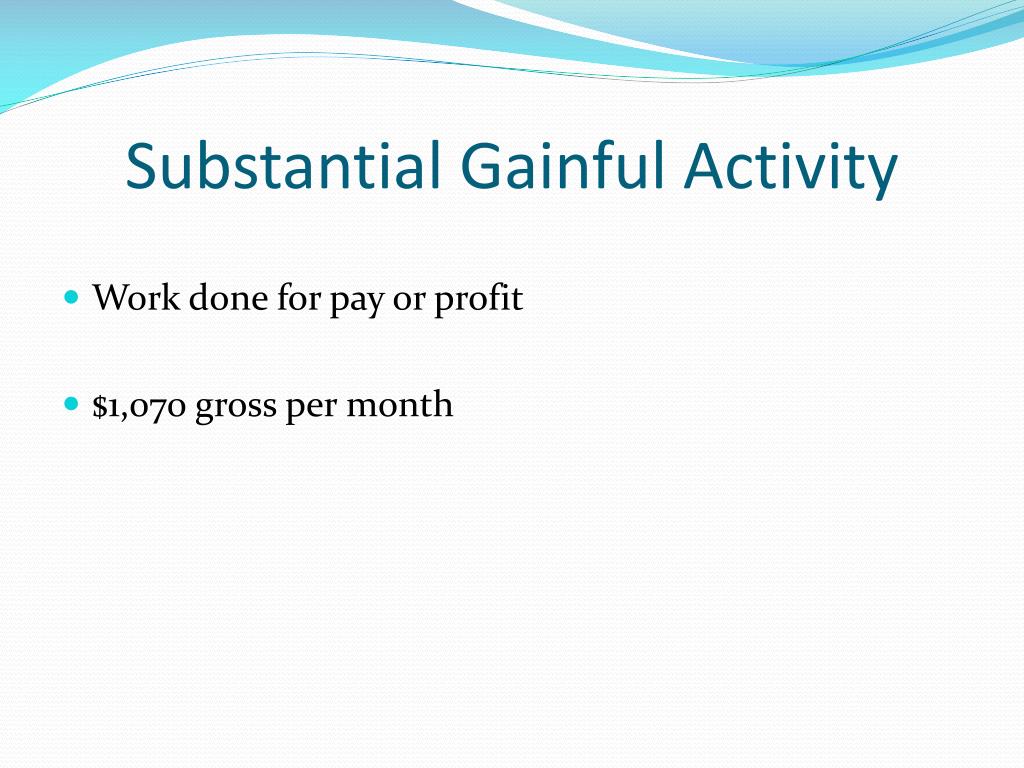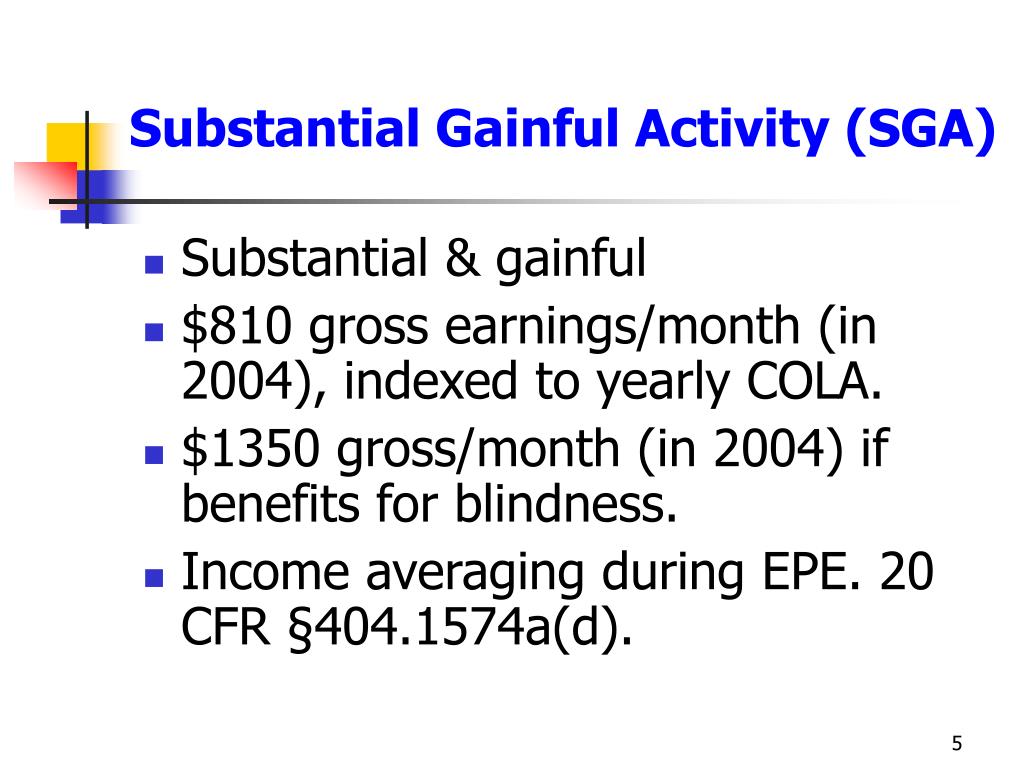
The United States Social Security Administration (SSA) provides disability benefits to individuals who are unable to work due to a medical condition. One of the key concepts in determining eligibility for these benefits is Substantial Gainful Activity (SGA). In this article, we will delve into the world of SGA, exploring what it means, how it is calculated, and its significance in the context of Social Security disability benefits.
What is Substantial Gainful Activity?
Substantial Gainful Activity refers to work that is substantial, meaning it involves significant physical or mental activities, and gainful, meaning it is done for pay or profit. The SSA uses SGA as a benchmark to determine whether an individual is capable of performing work that is substantial and gainful, and therefore, not eligible for disability benefits. The SSA considers various factors, including the individual's earnings, work duties, and the amount of time spent working.
How is Substantial Gainful Activity Calculated?
The SSA calculates SGA based on an individual's monthly earnings. For 2023, the SSA considers earnings of $1,470 or more per month to be substantial and gainful for non-blind individuals. For blind individuals, the threshold is $2,460 per month. These amounts are subject to change annually, so it's essential to check the SSA's website for the most up-to-date information.
In addition to earnings, the SSA also considers the nature of the work being performed. For example, if an individual is working in a sheltered workshop or participating in a vocational rehabilitation program, their earnings may not be considered substantial and gainful.
Significance of Substantial Gainful Activity in Social Security Disability Benefits
Substantial Gainful Activity plays a crucial role in determining eligibility for Social Security disability benefits. If an individual is engaged in SGA, they are generally not considered disabled and are therefore not eligible for benefits. However, if an individual is not engaged in SGA, they may be eligible for benefits, provided they meet other requirements, such as having a medical condition that significantly limits their ability to perform basic work activities.
The SSA uses a five-step evaluation process to determine eligibility for disability benefits, and SGA is a critical component of this process. The five steps are:
1. Is the individual working and earning above the SGA threshold?
2. Does the individual have a severe impairment that significantly limits their ability to perform basic work activities?
3. Is the individual's impairment listed in the SSA's Blue Book, which contains a list of impairments that are considered disabling?
4. Can the individual perform their past relevant work?
5. Can the individual perform any other work in the national economy?
Substantial Gainful Activity is a critical concept in the context of US Social Security disability benefits. Understanding what constitutes SGA and how it is calculated is essential for individuals who are applying for disability benefits. By recognizing the significance of SGA, individuals can better navigate the complex process of applying for benefits and ensure they receive the support they need. If you or someone you know is applying for disability benefits, it's essential to consult with a qualified attorney or advocate to ensure you receive the benefits you deserve.
For more information on Substantial Gainful Activity and Social Security disability benefits, visit the
Social Security Administration's website.









